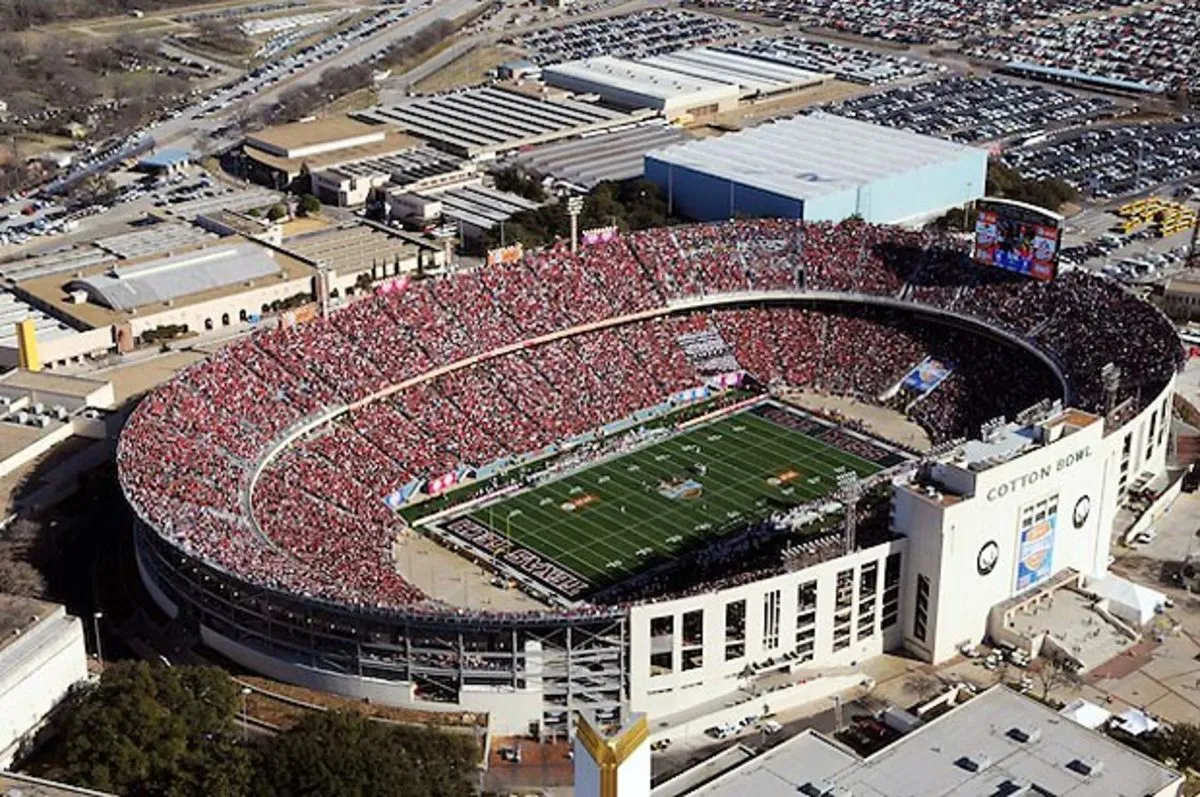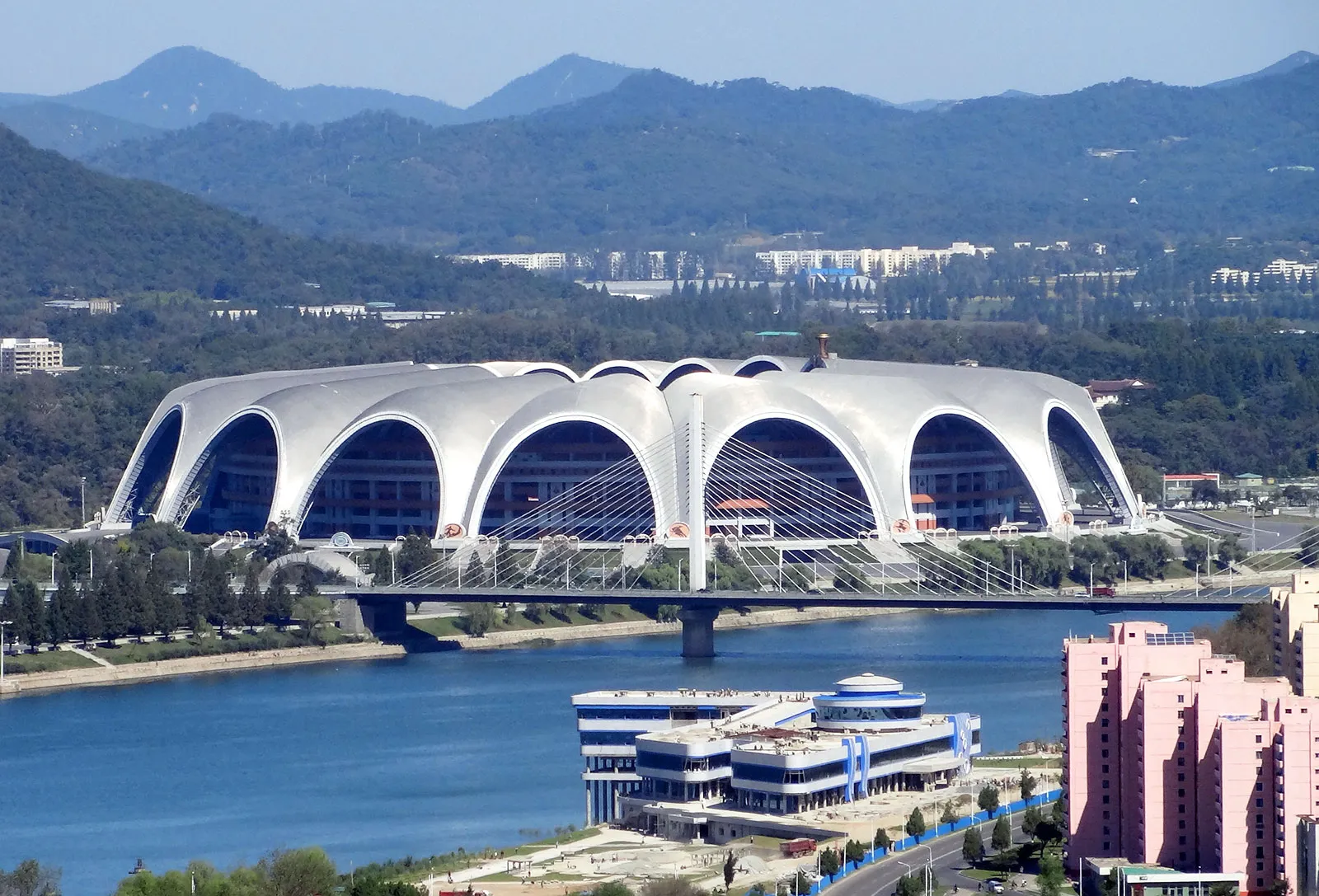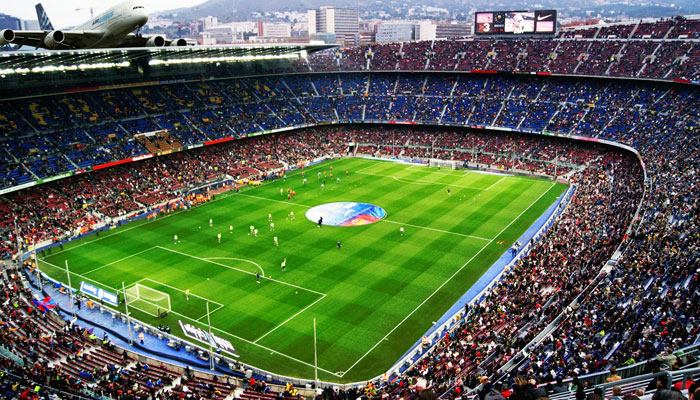The World’s Biggest Football Stadiums: Unmatched Atmosphere and Capacity
When it comes to football stadiums, size isn’t always everything, but large stadiums create an atmosphere that few other venues can match. From Europe to North America and Asia, the world is home to some colossal arenas that can house tens of thousands of fans, producing deafening roars and unforgettable experiences. These iconic stadiums have witnessed legendary matches and moments, adding to the rich history of football.
Here’s a breakdown of the ten largest football stadiums in the world, each with its unique history and character.
10. Cotton Bowl Stadium – USA (Capacity: 92,100)
Location: Dallas, United States
Opened: 1930
Notable Events: 1994 FIFA World Cup, annual Cotton Bowl Classic

The Cotton Bowl Stadium in Dallas has been a historic venue for both American football and soccer. With a capacity of 92,100, it hosted six matches during the 1994 FIFA World Cup. While it no longer serves as a regular venue for the U.S. men’s national team, it will be home to Dallas Trinity, a women’s soccer team, for the 2024/25 season.
This stadium, steeped in history, also hosted iconic college football games and boasts a long legacy in sports entertainment.
9. Rose Bowl Stadium – USA (Capacity: 92,800)
Location: Pasadena, United States
Opened: 1922
Notable Events: 1994 FIFA World Cup Final, 1999 FIFA Women’s World Cup Final, 1984 Olympic Games
The Rose Bowl, one of the most famous stadiums in the United States, is known for its iconic annual college football game and its rich football history. The 1994 FIFA World Cup final between Brazil and Italy took place here, where Roberto Baggio’s infamous penalty miss became an unforgettable moment. The stadium also hosted the 1999 FIFA Women’s World Cup final.
Today, it continues to host pre-season matches for Europe’s elite clubs and other international football games.
8. New Administrative Capital Stadium – Egypt (Capacity: 93,940)
Location: Cairo, Egypt
Opened: 2024
Notable Events: 2024 ACAD Cup, Future World Cup candidate
As the newest addition to the list of the world’s largest football stadiums, Egypt’s New Administrative Capital Stadium opened in 2024. With a seating capacity of 93,940, this state-of-the-art venue is part of the Olympic Sports City in Cairo. The stadium is poised to become a major venue for Egypt’s future bids for global tournaments, including a potential FIFA World Cup.
7. FNB Stadium – South Africa (Capacity: 94,736)
Location: Johannesburg, South Africa
Opened: 1989
Notable Events: 2010 FIFA World Cup Final, 2013 Africa Cup of Nations Final, Nelson Mandela’s 1990 speech
The First National Bank Stadium, also known as Soccer City, is Africa’s largest football stadium. It played a central role during the 2010 FIFA World Cup, hosting the final between Spain and the Netherlands. Additionally, it holds historic significance as the site of Nelson Mandela’s first speech in Johannesburg after his release from prison.
FNB Stadium remains the home of South Africa’s Kaizer Chiefs and regularly hosts major international football events and concerts.
6. Estadio Azteca – Mexico (Capacity: 95,500)
Location: Mexico City, Mexico
Opened: 1966
Notable Events: 1970 and 1986 FIFA World Cup Finals, 2026 FIFA World Cup venue
One of the world’s most iconic football stadiums, Estadio Azteca, has seen many legendary matches. It was the first stadium to host two FIFA World Cup finals, including Diego Maradona’s famous ‘Hand of God’ goal and his solo effort against England in 1986. Estadio Azteca is the home of Mexican side Club América and the Mexico national team. It will also host games during the 2026 World Cup.
5. Camp Nou – Spain (Capacity: 99,354)
Location: Barcelona, Spain
Opened: 1957
Notable Events: 1982 FIFA World Cup, Barcelona’s domestic and European triumphs
Camp Nou, home to FC Barcelona, is the largest stadium in Europe. It has been the site of countless unforgettable moments, from Lionel Messi’s magic to Barcelona’s historic European triumphs. The stadium is currently undergoing renovation, with the club temporarily playing its home matches at the Estadi Olímpic Lluís Companys.

Barcelona fans eagerly await their return to this iconic venue, which has been a fortress for the Catalan giants since 1957.
4. Melbourne Cricket Ground – Australia (Capacity: 100,024)
Location: Melbourne, Australia
Opened: 1853
Notable Events: 2032 Summer Olympics, international football matches
While primarily used for cricket and Australian rules football, the Melbourne Cricket Ground (MCG) has also hosted numerous international football matches. With a capacity of over 100,000, MCG was the venue for several soccer matches featuring global football giants like Manchester United and Real Madrid. It will also host matches during the 2032 Summer Olympics.
3. Ohio Stadium – USA (Capacity: 102,780)
Location: Columbus, United States
Opened: 1922
Notable Events: American football and soccer matches
Ohio Stadium, known for its unique design, is primarily used for American football but has also hosted international football matches, including a pre-season clash between Manchester City and Chelsea. With a capacity of over 102,000, it stands as one of the largest stadiums in the world.

2. Michigan Stadium – USA (Capacity: 107,601)
Location: Ann Arbor, United States
Opened: 1927
Notable Events: Real Madrid vs. Manchester United (2014), Ice Hockey Winter Classic
Nicknamed “The Big House,” Michigan Stadium is the largest venue in the United States and the second-largest in the world. It has hosted several high-profile soccer matches, including a record-breaking crowd of over 109,000 during a friendly between Real Madrid and Manchester United in 2014.
1. Rungrado 1st of May Stadium – North Korea (Capacity: 114,000)
Location: Pyongyang, North Korea
Opened: 1989
Notable Events: Mass games, international football matches
The world’s largest football stadium, Rungrado 1st of May Stadium in Pyongyang, North Korea, has a capacity of 114,000. While it hosts football matches for the North Korean national teams, it is best known for holding mass events, political rallies, and the world’s largest gymnastics display.

There are reports that the stadium could expand its capacity even further, potentially housing up to 150,000 spectators in the future.
Conclusion: The Legacy of Football’s Biggest Stadiums
These colossal football stadiums not only house incredible numbers of fans but also hold deep cultural and historical significance. From the iconic matches hosted at the Estadio Azteca to the roar of the crowd at Camp Nou, each of these venues contributes to the global legacy of football.
Whether you’re a fan planning a pilgrimage to one of these arenas or just marveling at the sheer size of these structures, these stadiums represent the heart and soul of the sport, where some of football’s most unforgettable moments have taken place.
ALSO READ:The Premier League’s Top 10 Midfielders: From Legends to Modern Day Masters



